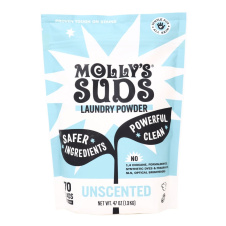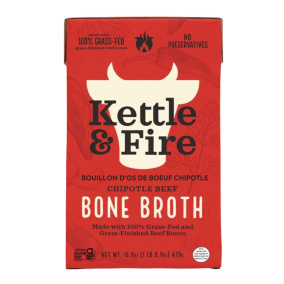
What Is Laundry Stripping and How to Do It
Want the cleanest laundry and freshest linens? The TikTok viral laundry stripping method is all about by removing odours, built-in dirt and grime, to leave everything feeling fresher than ever.
You’ve probably seen it on TikTok - or if you haven’t seen it, but maybe you’ve heard about laundry stripping and something about the idea intrigued you! Laundry stripping is both satisfying and somewhat terrifying. Who knew all of that could be lurking in your bed sheets, pillowcases, and towels, even after you washed it in your washing machine? But laundry stripping can be an effective way to deep clean your laundry and remove any dirt or body soils found deep in the fibers of your laundry that regular washing methods can’t remove.
What is Laundry Stripping?
So what is laundry stripping and what does it involve? Laundry stripping is a cleaning method that involves soaking laundry in very hot water for a few hours to break down and remove any build-up lurking in the woven fibers. The build-up can be composed of a variety of things, including soap scum, minerals from hard water, detergent, body soils, dirt, dryer sheets, and fabric softener. Typically normal washing methods do not remove all of this buildup, unfortunately, and can also be a contributor to the buildup as well.
How Do I Strip My Laundry to Remove Buildup?
In the viral TikTok trend, the recipe for stripping your laundry involves soaking your laundry in hot water mixed with borax, washing soda, and laundry detergent to deep clean your laundry and remove the build-up lurking in the fabrics.
Borax is used in traditional cleaning methods for its ability to neutralize odours and to soften hard water; however, it is not considered safe to use. Borax is considered to be toxic and can have adverse health effects, including burning of skin, irritation of the skin and eyes, nausea, respiratory problems, potential fertility complications, and potential poisoning. It is not safe to use in households that have children and pets.
However, if you still want to participate in the laundry stripping trend, we’ve come up with a more natural, eco-friendly solution - so you can deep clean your laundry effectively and safely, without having to use any harmful toxins!
How to Strip Laundry Naturally
We recommend replacing the borax in the laundry stripping recipe with a more safe cleaning agent: baking soda! Used in many natural cleaning DIYs, baking soda is known for being powerful in deodorizing and removing any dirt or debris but is a more gentle, safer alternative to borax. Using baking soda in place of the borax will be just as effective in stripping your laundry, but is a much safer, natural alternative.
When it comes to laundry stripping there are a few things you should consider before you start:
- It is not recommended to use the laundry stripping method on dark-coloured fabrics (due to dyes running or fading).
- You should also avoid laundry-stripping clothes that are made of delicate fabrics or delicate garments.
- Laundry stripping works best on white or light coloured fabrics, and best on sheets, towels, and pillow cases.
- Avoid stripping laundry like your comforter or pillows, as it is possible the fabric may crack or the stuffing may clump together.
Here are the steps to stripping your laundry naturally:
- To strip your laundry, you’re going to need to fill up your bathtub, a large bucket, or a utility sink with very hot water (size depends on how much laundry you wish to strip). Make sure you add enough water to fully submerge your laundry in.
- Add ¼ of a cup of baking soda, ¼ a cup of washing soda, and ½ a cup of natural, eco-friendly laundry detergent to the hot water. We recommend using an unscented detergent made from plant-based ingredients, such as this one from Method.
- Stir the mixture. Then add the clean laundry to the water. Do not overfill your bucket or tub with too much laundry. It is important that before stripping your laundry you have washed it first.
- Using a long broom handle or pole, push the laundry into the water and ensure that all laundry is soaked.
- Once fully submerged, leave the laundry to soak for 3-4 hours. Go back every hour and give it a good stir with your broom handle or pole.
- After about 4 hours, the water should be cooled down and should also be a murky, dirty colour. It won’t be the nicest thing to look at, but it will feel satisfying to know that your laundry has been stripped of all of that build up!
- Drain the water from your tub or bucket. Wring out your laundry to remove any excess water. Transfer to a clean bucket to transport it to your washing machine.
- Place the laundry in your washing machine. You can choose to further rinse out your laundry using the water only cycle, or you may wash your laundry using your usual washing method with detergent. Either way is effective and it is a matter of preference.
- Dry your laundry accordingly.
Some Extra Tips for Laundry Stripping
Now that you’re ready to start laundry stripping, here are some extra tips and tricks to laundry stripping that you should know:
- Although it may be tempting, don’t strip your laundry too frequently, as it could contribute to wearing down and aging the fabrics. However, it is good to do it every 6 months or so, depending on the use of the item, to help keep them clean.
- To reduce the amount of buildup in fabrics and help to further reduce the amount of times you have to strip your laundry, ensure you aren’t overloading your washing machine, which leaves very little room for water to clean and rinse properly, causing dirt, debris, and detergent to become trapped in the fibers, which contributes to build up.
- Avoid overusing detergent or fabric softener when washing your laundry, which can contribute to buildup in the fabrics.
Conclusion
Laundry stripping may be a TikTok trend, but it’s also a bit more than that! Laundry stripping can also be considered an effective way to deep clean various fabric items in your home such as your bedsheets, pillowcases, and towels, although it isn't a solution for all laundry items. Items that are made of certain fabrics and are of darker colours should not be washed using the laundry stripping method, as it could deteriorate the quality of the materials overtime. To minimize the amount of buildup that is collected deep in the fibers of your laundry, it is good to ensure you aren’t overloading your washing machine, so your laundry can be thoroughly cleaned and rinsed. Although you may think that more is better, it is also recommended that you do not overuse laundry detergents or fabric softeners, as they can also be a contributing factor to buildup. Always follow the recommended usage guidelines found on the bottle.
Laundry stripping can have positive effects and remove dirt, debris, body soils, soap scum, and minerals from hard water that are lurking deep within the fabrics of your laundry that you assume to be clean.





